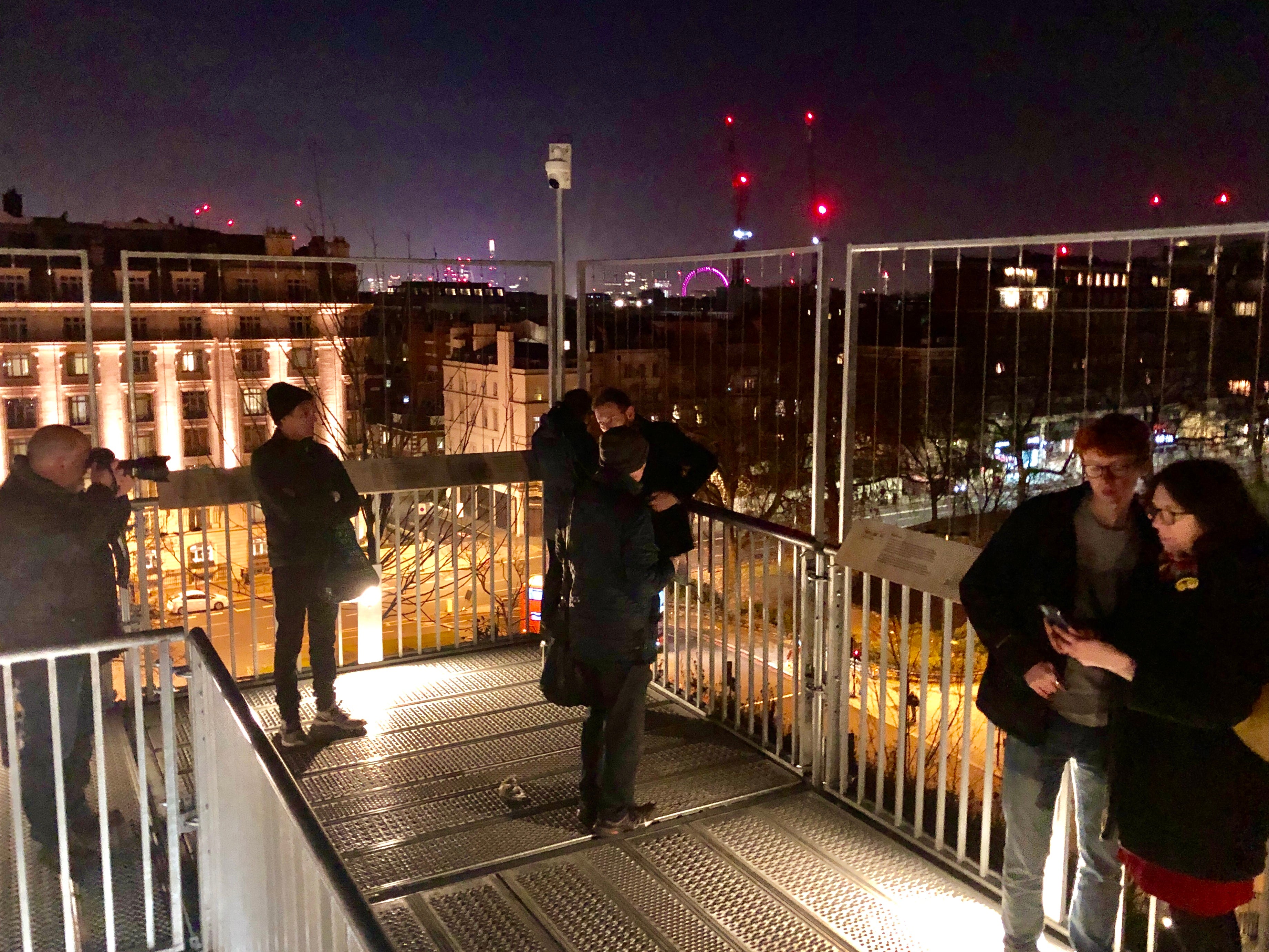Marble Arch Mound: London’s most divisive attraction finally closes after barrage of bad reviews
A ‘scaffolding pinnacle draped in turf and trees’ cost council taxpayers £24 for every visitor during its five-month exisitence

To the west, a perfect half moon smiled over the structure. A procession of planes twinkled their way into Heathrow airport, while the river of traffic snaking up Park Lane created its own dazzling show.
“It is lovely to be able to see London from a height,” said Pek Tan from Wandsworth in south London, who had arrived with her husband and two sons for a last glimpse of the Marble Arch Mound before it was torn down.
By 10pm, the official closing time, half-a-dozen stragglers were still lingering at the summit of the controversial tourist attraction – seeking to savour the ultimate moments from a viewpoint before it vanished.
A few minutes later, security staff ushered the final spectators down from the metal viewing platform that stood 82 feet above the busy traffic intersection at the western end of London’s Oxford Street.
At the foot of the mound, the barriers and gates that formed the hinterland of the temporary tourist attraction had already been dismantled. What was billed as “a new perspective of the future” was over.
The scaffolding pinnacle draped in turf and trees was intended to entice visitors back to the West End of London.
Westminster City Council’s stated aim for the Marble Arch Mound project was to “bring a renewed emphasis on delivery and to bring focus and ambition to the Oxford Street district.”
It succeeded in the case of Mark Gent, an architect from Worcestershire, who drove 140 miles from his home for the final high-altitude hurrah. He said: “I wanted to see it before it comes down.”
But he was underwhelmed by the experience: “Once you get up here, the view isn’t that great. It needs to be a bit higher.”
He said the designers should have “concentrated more on the structure and getting the view” rather than creating the impression of an implausibly angular hill.
“They’ve gone too ‘green’ from the point of view of cladding it with trees and plants,” he said.
Council taxpayers underwrote the £6m cost, which was twice the original estimate. Plans to charge admission were quickly abandoned after online reviews rubbished the experience.
“Horrible metal stairs and the poor dead plants”, wrote Christine and Thomas from Gloucestershire on TripAdvisor.
If the claimed figure of 250,000 visitors during the five months the mound was open is correct, the cost per tourist was £24.
A last-minute online petition to keep the structure intact has attracted only a few dozen signatures. But Pek Tan, one of the final visitors, said: “Having spent that much money it’s probably not worth tearing it down so early.
“London as a capital city, and a global city, should probably have as many offerings as it can.
“Perhaps another location might be more suitable?”
Visitors are also no longer able to view the exhibition enclosed by the mound, known as Lightfield. It was designed to “simulate the interconnected root structure of a birch tree forest”.
London’s closest parallel of a tourist attraction that opened to public derision is the Millennium Dome in North Greenwich. The £700m project opened on 1 January 2000, but proved such a flop that by the end of the year the £20 admission fee had been cut to £1.
Yet the structure is still intact as the O2 arena. It is at the heart of a regenerated district that includes other attractions including Mamma Mia: the Party, celebrating Abba, and the “Emirates Air Line” cable car across the Thames.
Meanwhile, Westminster City Council’s report into the Marble Arch Mound fiasco found “significant project-overspend, circumvention of existing governance processes and lack of robust project management”.
And the dream of “a renewed excitement about the area [that] manifests the council’s vision of a Greener, Smarter, Future, Together” is over.
Join our commenting forum
Join thought-provoking conversations, follow other Independent readers and see their replies
Comments
Bookmark popover
Removed from bookmarks